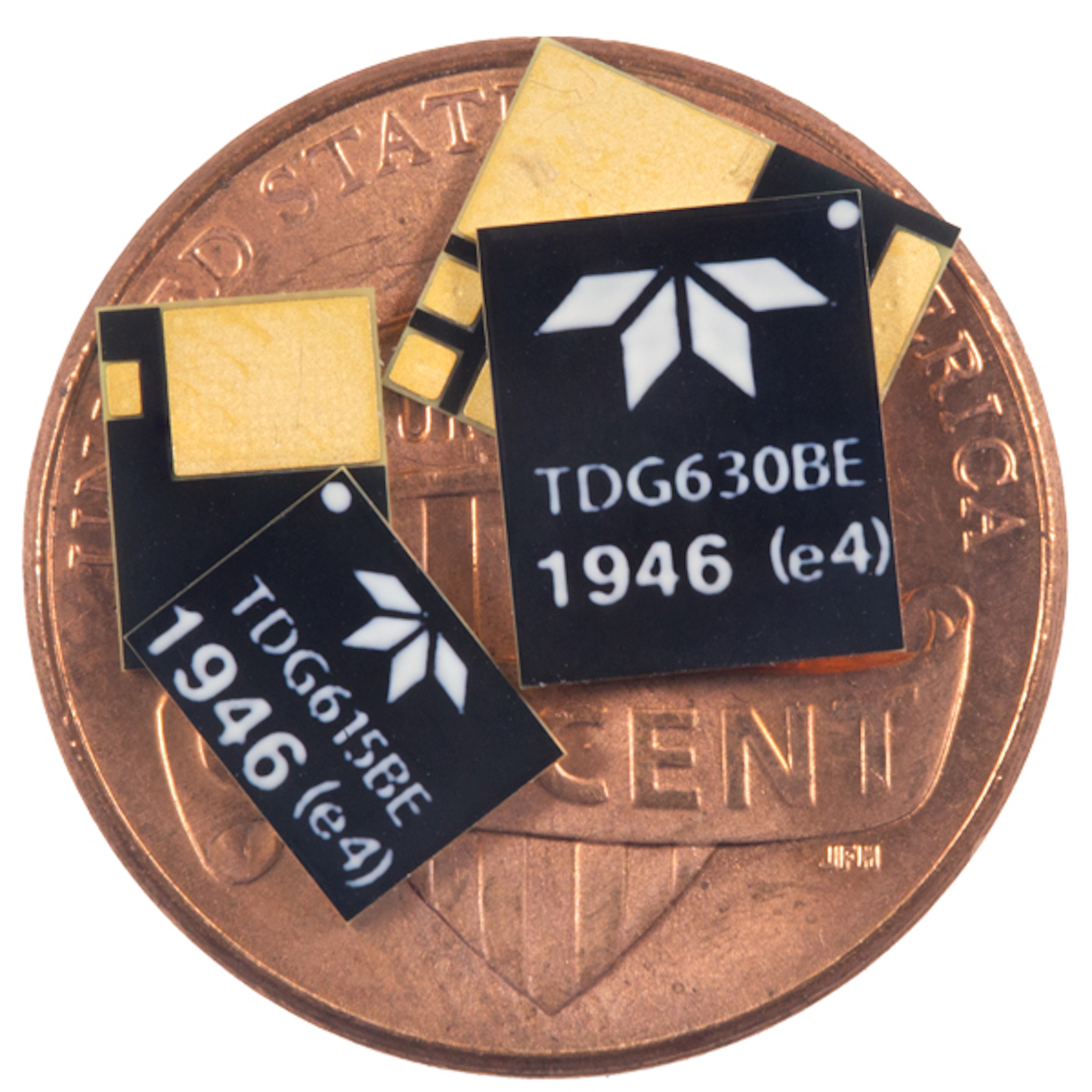Teledyne e2v HiRel Unveils new 650V GaN HEMTs

High voltage GaN HEMTs for hi-rel applications now available in lower current 15A and 30A versions
Teledyne e2v HiRel is adding two new, ruggedised GaN power HEMTs to its 650V, high-power family of products based on GaN Systems technology.
The two new high-power HEMTs, TDG650E30B and TDG650E15B, deliver lower current performance of 30A and 15A respectively, while the original 650 V introduced last year, the TDG650E60, delivers 60A.
These 650 V GaN HEMTs are the highest voltage GaN power devices available on the market for demanding high-reliability military, avionics, and space applications. They are an ideal fit for applications like power supply, motor control, and half bridge topologies.
They come with a bottom-side cooled configuration and feature ultra-low FOM Island Technology die, low inductance GaNPX packaging, very high frequency switching of >100 MHz, fast and controllable fall and rise times, reverse current capability, and more.
“We are pleased to continue the build-out of our 650 V family of high power GaN HEMTs for applications requiring the highest reliability such as space.” said Mont Taylor, VP of business development for Teledyne e2v HiRel. “We believe the smaller sized packaging of these new devices will really benefit customers designing for the highest power density projects.”
The TDG650E15B and TDG650E30B are both enhancement mode GaN-on-Silicon power transistors that allow for high current, high voltage breakdown and high switching frequency while offering very low junction-to-case thermal resistance for high-power applications.
The release of these new GaN HEMTs delivers to customers the efficiency, size, and power-density benefits required in critical aerospace and defense power applications.
For all product lines, Teledyne e2v HiRel performs the most demanding qualification and testing tailored to the highest reliability applications. For power devices, this regime includes sulphuric test, high altitude simulation, dynamic burn-in, step stress up to 175degC ambient, 9-volt gate voltage, and full temperature testing. Unlike SiC devices, these two devices can easily be implemented in parallel to increase the load current or lower the effective RDSon.


































